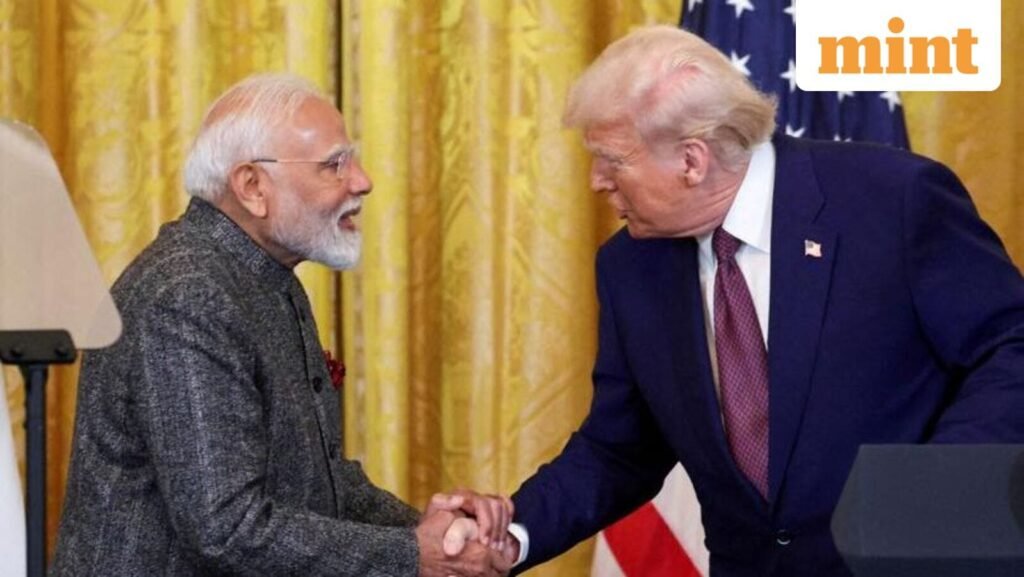From 1 October, Washington will impose a 100% tariff on branded and patented pharmaceuticals unless the exporting company is already building a plant in the US. Trucks will face a 25% duty, kitchen cabinets and bathroom vanities 50%, and upholstered furniture 30%, likely under the controversial Section 232 national security clause.
The US has already invoked Section 232 of the General Agreement on Tariffs and Trade (GATT) to impose additional duties of 50% on steel and aluminium, along with tariffs on auto components and copper.
Several countries, including China, India, and the European Union (EU) have filed disputes at the World Trade Organization (WTO), arguing the tariffs violated multilateral rules and undermined agreed tariff bindings. Washington rejected these challenges, insisting the measures are justified on national security grounds. Section 232 authorizes the US president to adjust imports that threaten to impair national security.
Immediate impact vs larger concern
For India, the direct impact of the pharma tariffs may be limited because its strength lies in generics rather than high-value branded drugs.
The bigger concern is the reliability of trade agreements. If allies like the EU, UK, and Japan—together supplying 70% of America’s branded drugs and manufactured goods—can be targeted, what guarantees can India expect once it signs its own BTA?
High-stakes BTA talks
India and the US are in high-stakes negotiations to seal a BTA by fall 2025, typically the September to November period, as declared in a joint statement on 13 February.
New Delhi is pushing for duty concessions on textiles, gems and jewellery, leather, and farm products. Washington wants India to reduce Russian oil imports, increase US oil purchases, and open markets for its dairy, farm produce, and patented drugs.
Trump’s sudden tariffs, however, inject doubt into the very foundation of trade pacts. For India, this raises a strategic question: how can it secure commitments that will withstand unilateral US measures?
Section 232: A double-edged tool
Trump may be forcing multinationals to “build in America” and projecting toughness on trade. But Section 232 risks straining relations with allies, raising US healthcare costs, and undermining confidence in trade commitments.
For India, the lesson is clear: if traditional allies are exposed, only legally binding safeguards can protect future exports.
Global trade rules under strain
The issue also highlights a wider erosion of global trade rules. Section 232 has long been seen as a loophole that lets the US impose duties under a national security cover without WTO scrutiny. Having already targeted steel, aluminium, auto components, and copper, Washington is now extending the logic to pharmaceuticals, trucks, and furniture.
This sector-by-sector approach leaves exporters worldwide guessing which product might be hit next, disrupting investment and planning. For India, which relies on stable markets for textiles, generics, and IT services, such unpredictability raises serious risks.
India’s negotiating dilemma
Although India is not directly hit by the pharma tariff, the announcement carries strategic weight.
The US has consistently pressed for stronger intellectual property protection and greater space for patented drugs in India. Trump’s new tariff threat could be used as a bargaining chip, while India’s low-cost generics may gain importance if branded imports from Europe and Japan are disrupted.
This paradox—pressure on one side, opportunity on the other—makes it vital for New Delhi to lock in binding tariff commitments.
What lies ahead
The executive order detailing these tariffs has not been issued, leaving scope for exemptions or political backtracking. Either way, India’s concerns are reinforced. If the tariffs are applied uniformly, it shows trade agreements cannot shield even allies. If exemptions are carved out, it exposes the arbitrary nature of such decisions.
In both cases, the credibility of trade deals suffers, and India must negotiate with its eyes open.
Expert view
“Trump’s use of Section 232 on pharma and consumer goods is a double-edged sword. On one hand, it signals his intent to bring manufacturing back home. On the other, it undermines trust with allies and erodes the credibility of trade agreements. India should approach its BTA negotiations with caution, ensuring there are strong protections against unilateral tariff shocks,” said Dattesh Parulekar, assistant professor, International Relations, Goa University.
“We are prepared to navigate the 100% turbulence and are exploring US-based manufacturing partnerships to ensure compliance and continuity. India’s strength lies in quality, scale, and adaptability—and this is the moment to reinforce it,” said Ram Chintalapudi, founder & CMD, Skinska Pharmaceutica.




